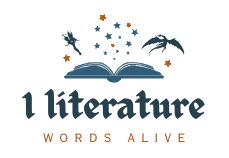In "The Good Daughters," Joyce Maynard takes you on an emotional journey with Ruth Plank and Dana Dickerson, two girls born on the same day in New Hampshire. You'll experience their struggles with family, identity, and love, particularly as they confront shocking secrets that intertwine their lives. As Ruth, an artistic soul, and Dana, a determined scientist, navigate their complicated relationship, you'll see how their backgrounds shape them. Themes of resilience, forgiveness, and the search for belonging resonate throughout the story. If you want to discover the unexpected twists and deeper connections, there's much more to uncover.
Overview of the Novel

In "The Good Daughters," Joyce Maynard weaves a compelling tale of two girls, Ruth Plank and Dana Dickerson, who are born on the same day yet grow up in vastly different environments in New Hampshire.
The narrative explores deep themes of family secrets and identity, showcasing how each girl navigates her unique challenges. Ruth, a passionate artist, contrasts with Dana, a rational scientist, highlighting their differing approaches to life. Through their journeys, we see how creative expression can serve as a therapeutic outlet for processing trauma. This mirrors the stories shared by successful Australian women who illustrate the resilience and strength needed to overcome challenges.
Maynard employs alternating chapters to give you insight into both protagonists, enriching your emotional connection to their journeys. As you follow their intersecting lives, you witness profound moments of personal growth that shape them into the women they become.
This beautifully crafted story invites you to reflect on the complexities of family and friendship, much like the immigrant experience depicted in "A Tree Grows in Brooklyn."
Main Characters
In "The Good Daughters," you'll see how Ruth and Dana navigate their complex family dynamics and personal growth. Each character faces challenges that push them toward transformation, revealing their strengths and vulnerabilities. As their paths intertwine, you'll witness the profound impact they've on one another's lives. The journey of love and loss emphasizes the importance of human connections as they navigate their intertwined destinies. Additionally, their experiences reflect the significance of resilience in overcoming adversity, much like the characters in "The Book Thief." The narrative's exploration of personal growth mirrors the masterful portrayal of the human spirit's resilience found in classic literature.
Character Dynamics
While steering through their intertwined lives, Ruth Plank and Dana Dickerson reveal the complexities of sibling dynamics within their respective families.
Ruth, the youngest daughter, seeks belonging and understanding as a passionate artist, often feeling isolated from her siblings. In contrast, Dana, the strong-willed scientist, fights to maintain stability amidst her chaotic upbringing.
Their relationships are further complicated by Ray Dickerson, Dana's brother, as both women navigate their feelings for him.
Edwin Plank, Ruth's supportive father, fosters a bond between the two girls, especially against the backdrop of Dana's mother, Val, who embodies instability.
These contrasting family dynamics shape their choices, ultimately influencing the nature of their relationships and the paths they pursue.
Growth and Transformation
As Ruth and Dana navigate the complexities of their intertwined lives, they undergo profound growth and transformation that reshapes their identities.
Ruth grapples with isolation, using her artistic passions to forge deeper relationships and discover her true self. In contrast, Dana's chaotic upbringing fuels her strong will and desire for stability, prompting her to prioritize family unity above all.
Both face societal expectations and familial pressures, which challenge their understanding of love and belonging. Through shared experiences, they learn the importance of forgiveness, healing, and redefining their identities.
As their complex relationship evolves, Ruth and Dana emerge stronger, illustrating that growth often comes from overcoming adversity and embracing the transformative power of connection.
Character Relationships

In "The Good Daughters," you see how Ruth and Dana's unique bond shapes their lives, even as their family dynamics pull them in different directions.
Edwin Plank's nurturing influence creates a stark contrast to Dana's chaotic upbringing, adding layers to their relationship. This dichotomy reflects the profound impact of family dynamics that is also explored in *The Thorn Birds*, where relationships significantly shape personal identities. The nurturing aspects of family can also be seen in the culinary experiences at Water for Chocolate, where the bond over shared meals fosters deep connections.
As they navigate their feelings for Ray, the complexities of their connections become even more pronounced, revealing the impact of their families on their identities. This dynamic mirrors the themes of resilience in historical fiction, showcasing how familial relationships can shape one's journey and identity amidst challenges.
Character Connections
Two families weave a complex tapestry of relationships in "The Good Daughters," showcasing how bonds can form despite contrasting backgrounds.
Ruth Plank and Dana Dickerson, born on the same day, share a deep friendship that transcends their differing family dynamics. Edwin Plank serves as a father figure to both girls, offering wisdom that shapes their identities.
Meanwhile, Dana's brother, Ray Dickerson, introduces romantic tension that complicates Ruth and Dana's connection. The contrasting parenting styles of Connie Plank and Val Dickerson further highlight the impact of family dynamics on their daughters' lives.
Ultimately, Ruth and Dana's friendship illustrates that love and shared experiences can forge familial ties stronger than blood, enriching their lives in profound ways.
Family Dynamics Explored
While steering through their intertwined lives, Ruth and Dana reveal how family dynamics shape their identities and relationships.
Ruth's isolation contrasts sharply with Dana's determination to uphold their chaotic family structure. Edwin Plank nurtures both girls, fostering a bond that transcends their different upbringings.
However, the tumultuous relationship between Dana and her brother Ray, who becomes romantically involved with Ruth, complicates their sisterly connection.
Both girls face emotional struggles as they navigate personal challenges and the weight of family secrets, affecting their sense of self.
Through shared experiences and the love they cultivate, they uncover familial bonds that go beyond traditional ties, illustrating how love and friendship can profoundly influence their lives.
Themes Explored
As you explore "The Good Daughters," you'll discover that the themes of family dynamics and personal identity are intricately woven throughout the narrative.
The story highlights how upbringing and family secrets shape not just individual identities but also relationships. You'll see Ruth and Dana traversing emotional bonds formed through love and loss, showcasing the depth of their connection. This deep connection is reminiscent of the complex motivations that drive characters like Kane and Abel in their pursuit of success. Moreover, the struggles faced by the daughters echo the enduring human spirit seen in narratives like Louis Zamperini's journey in survival against adversity.
Identity and self-acceptance emerge as central themes, as each daughter grapples with societal expectations and her own quest for belonging.
The narrative also tackles the complexity of forgiveness and healing, illustrating how past confrontations enable characters to redefine their futures.
Ultimately, the interplay between individuality and familial ties emphasizes that personal growth often flourishes within family relationships. Additionally, the exploration of these themes resonates with the importance of recognizing hidden contributions that shape our understanding of family and identity.
Plot Summary

In "The Good Daughters," you witness the stark contrasts between Ruth's nurturing upbringing and Dana's turbulent childhood.
As secrets emerge, including a shocking revelation about their identities, you see how these truths shape their personal growth journeys. Personal growth is essential for unlocking hidden talents, leading to a more fulfilling life, which resonates with the characters' evolving narratives and embracing authenticity. Marriage, much like family dynamics, often reflects complex power dynamics that influence individual development and relationships.
This story beautifully captures the complexities of family dynamics and the quest for belonging. The themes of healing and growth are echoed throughout their intertwined stories, highlighting the importance of personal transformation.
Contrasting Family Backgrounds
Although Ruth Plank and Dana Dickerson share a birthday, their family backgrounds couldn't be more different.
Ruth thrives in a nurturing environment, raised by her artistic parents, Edwin and Connie Plank, who encourage her creativity and emotional expression.
In stark contrast, Dana endures a chaotic upbringing with unstable parents, Val and George Dickerson, which drives her towards scientific pursuits for stability.
These contrasting backgrounds shape their identities and relationships, highlighting how family secrets and emotional support influence personal growth.
While Ruth finds freedom in her artistic endeavors, Dana's quest for self-reliance stems from a need to escape uncertainty.
Together, their lives intertwine, revealing the powerful impact of upbringing on who they become.
Secrets and Revelations
Ruth and Dana's contrasting backgrounds set the stage for a series of secrets that will upend their lives.
As you explore deeper into the narrative, you discover how their identities are shaped by family dynamics and hidden truths.
The intertwining of their lives with shared love interests, particularly in Dana's brother, Ray, adds complexity to their relationships.
Tensions escalate as long-buried family secrets come to light, forcing both women to confront their pasts.
The revelations lead them to question their sense of belonging and the very nature of their connection.
Ultimately, the shocking twist that Ruth and Dana were switched at birth reshapes everything—challenging their understanding of family, identity, and fate itself.
Personal Growth Journey
As the narrative unfolds, you'll witness Ruth and Dana's personal growth journeys, shaped by the contrasting environments they've navigated since birth.
Ruth's artistic aspirations bloom amid emotional connections formed with her family, while Dana's scientific pragmatism stems from a more structured upbringing.
Both characters confront buried family secrets that challenge their identities and lead them to reassess their relationships.
Over the decades, their paths intersect and diverge, reflecting their struggles with love, loss, and societal expectations.
Ultimately, Ruth and Dana's journeys illustrate that personal growth often emerges from adversity.
They learn that embracing their unique experiences fosters a deeper understanding of themselves and the importance of emotional connections in shaping their identities.
Narrative Structure
While traversing the intricate lives of Ruth Plank and Dana Dickerson, you'll find that "The Good Daughters" employs an alternating chapter structure that offers a compelling dual perspective.
This narrative structure enhances emotional engagement, allowing you to dive deep into each character's contrasting backgrounds and character development over several decades.
As you read, you'll encounter flashbacks that enrich their emotional journeys, revealing significant family secrets that add layers of complexity.
The structure builds suspense, challenging your assumptions about the characters.
Ultimately, this carefully crafted format leads to a powerful twist, reshaping their understanding of identity and relationships.
Through this approach, the novel creates a rich tapestry of interconnected lives, fully immersing you in their stories.
Author's Background

Having gained national attention with her 1973 cover story for The New York Times, Joyce Maynard quickly established herself as a prominent voice in contemporary literature.
As a bestselling author, she's known for her novels and memoirs, such as "Labor Day" and "At Home in the World." Her work often explores the emotional depth of families intertwined, resonating with readers who seek profound storytelling.
Maynard's diverse background in reporting and column writing enhances her narrative style, allowing her to tackle relatable themes effectively. She's contributed to major publications like O Magazine, Newsweek, and Forbes, showcasing her versatility.
Through her compelling prose, Joyce Maynard continues to captivate audiences, solidifying her place in the literary world.
Critical Reception
Critics and readers alike have embraced "The Good Daughters," highlighting its emotional depth and rich character development.
With a rating of 3.86 from nearly 19,000 readers, the novel showcases its strong critical reception. Many praise the emotional resonance and the exploration of family dynamics, often comparing it to Joyce Maynard's earlier work, "Labor Day."
However, some note mixed feelings about the predictability and pacing of the plot, creating diverse opinions on its narrative effectiveness. The audio version, narrated by Maynard herself, has also been well-received, adding to the overall experience.
- Emotional depth resonates with many.
- Characters feel relatable and authentic.
- Family dynamics spark engaging discussions.
- A few find the pacing uneven.
- Predictability may deter some readers.
Reader Engagement

How can readers not engage deeply with "The Good Daughters," given its intricate themes of family dynamics and identity?
The alternating perspectives of Ruth and Dana invite you to empathize with their unique struggles, enhancing your emotional investment in their journeys.
As you uncover family secrets, the narrative encourages rich discussions, especially in book clubs, about how upbringing shapes personal choices.
The emotional depth and relatable character experiences resonate, prompting varied and profound responses.
Engaging with the story not only immerses you in their lives but also encourages personal reflection on your own family histories and relationships.
This connection to the themes presented makes "The Good Daughters" a powerful catalyst for introspection and dialogue.
Educational Insights
While you explore "The Good Daughters," you'll discover a wealth of educational insights woven into the narrative. The story examines agricultural practices, particularly the importance of crop hybridization in rural New Hampshire.
You'll also encounter themes of mental health, highlighting the struggles characters face against societal expectations. The narrative thoughtfully addresses terminal illness and euthanasia, presenting emotional dilemmas within familial ties.
Set in the 1960s, it offers a cultural context that shapes the characters' experiences. Additionally, the exploration of identity and belonging emphasizes how personal history influences growth and self-discovery.
- The role of agriculture in family life
- Coping mechanisms for mental health
- Ethical considerations of euthanasia
- The impact of identity on choices
- Understanding familial relationships
Conclusion
You might think that intertwining two families' stories could get confusing, but don't worry! The narrative flows seamlessly, making it easy to follow each character's journey. As you turn the pages, you'll find yourself deeply invested in their lives, rooting for their triumphs and empathizing with their struggles. Embracing the complexities of family ties enriches your reading experience, revealing profound insights about love, loyalty, and the bonds that shape us all. Enjoy this enthralling tale!



